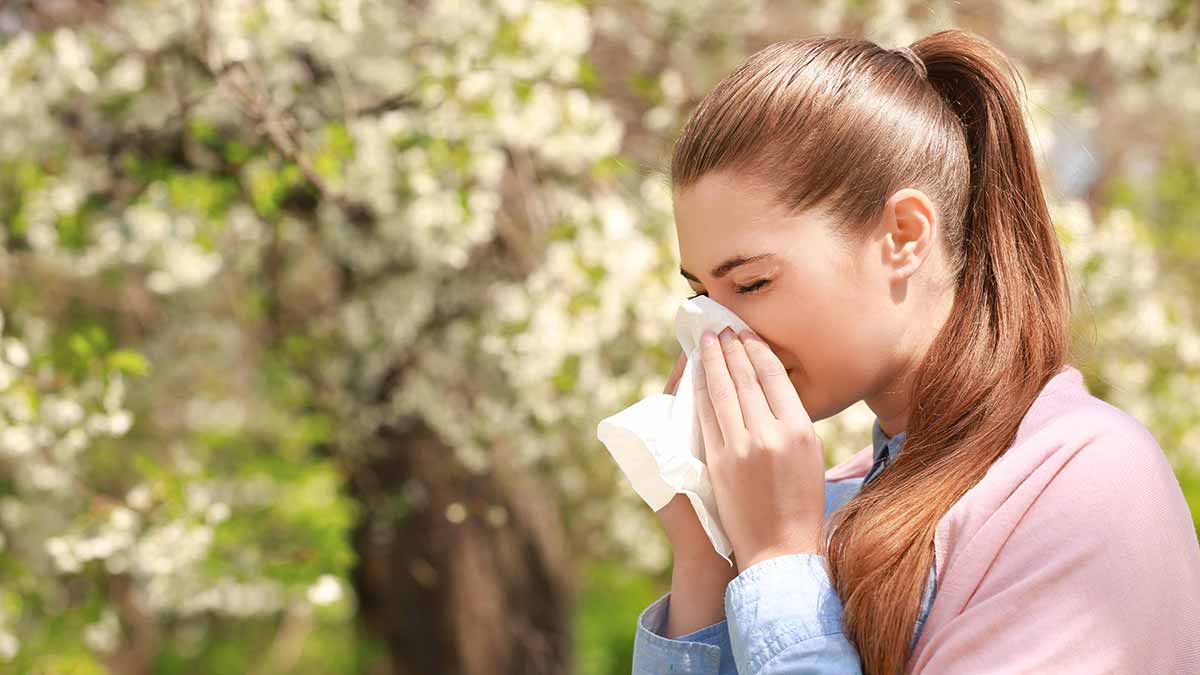3 tips for coping with seasonal outdoor allergies

With much of the country enjoying unusually warm weather, a bit earlier than our typical spring thaw — the sunny skies and blooming flowers may be triggering another early arrival, that of seasonal allergies.
While the long-awaited time outdoors is exhilarating for some, for others it can be miserable as they deal with sneezing, runny noses and itchy eyes, as seasons change. In fact, millions of Americans suffer from allergies each year.
Some of the most common outdoor allergy triggers are tree, grass and weed pollen.
Allergic rhinitis, often known as hay fever, can be triggered when things like pollen enter your body, causing your immune system to mistakenly identify it as a threat. In response, you may experience symptoms in the nose like sneezing, runny nose or congestion.
Unfortunately, there is no cure for allergies but there are ways to help make the outdoors a little more bearable, through prevention and treatment. Medical costs associated with pollen allergies exceed $3 billion every year, with nearly half of those costs linked to prescription medicine.
“Seasonal allergies can make you feel depressed, but they also don’t mean that you have to avoid the outdoors either,” said Dr. Ravi Johar, chief medical officer for UnitedHealthcare. “Most people who suffer from allergies are able to control them and continue to live an active lifestyle.”
If you have seasonal outdoor allergies, you may want to consider preparing for your symptoms before they appear. Experts say taking medication before allergy season starts helps your body build up a defense when the pollen hits – making it easier to control symptoms.
Here are three tips that may help provide relief when spring blossoms:
1. Reduce your exposure
Understanding what triggers your allergies can help you reduce your exposure. Other ways to help include:
- Running your air conditioning in your home and car to help keep pollens outdoors
- Avoid lawn mowing or gardening chores that may stir up allergens in the air
- Using air purifiers or air filters in your home to help remove dust, allergens and pollen
- Avoid drying clothing outdoors where they can collect pollen
- Take a shower and change your clothes before going to sleep
2. Track when pollen is high
Check your local pollen forecasts to stay on top of when high counts are expected. When high pollen days are forecasted, start taking allergy medications before symptoms begin. Also consider:
- Staying indoors during high pollen counts between 5 and 10 a.m. or on dry, windy days
- Closing doors and windows
- Wearing a pollen mask if you need to do outside chores
If you have kids with seasonal allergies, consider letting them play outdoors closer to the evening, wearing fitted sunglasses to protect their eyes from pollen and keeping the windows closed in their bedroom to create a pollen-free space.
3. Consider over-the-counter remedies
Several non-prescription medications may help ease symptoms, including:
- Oral antihistamines, which may help relieve sneezing, itching, runny nose and watery eyes
- Decongestants, such as pseudoephedrine, may provide temporary relief from nasal stuffiness. This may also come in nasal sprays, such as oxymetazoline and phenylephrine
- Combination medications that mix an antihistamine with a decongestant
- Rinsing your nasal passages with saline solution or a neti pot may help flush the allergens from your nose
If you’re still struggling to manage your symptoms, contact your doctor to explore further treatment options.
Learn more about allergy types and causes.